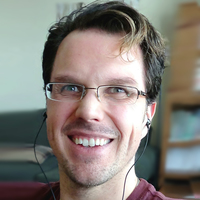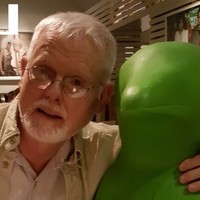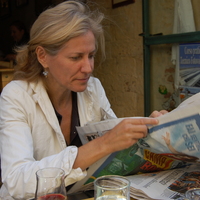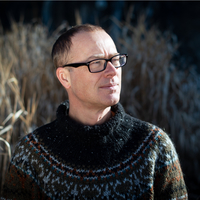
Lidia Gluchowska
Ph.D. Lidia Głuchowska
Head of the Department of History and Theory of Art at the University of Zielona Góra.
Lectures: History of Painting, History of Print Art, History of Interiors and Furniture, History of Gardens, Body in the Contemporary Culture, History of Architecture .
BA and MA seminaries.
1992-2000 MA studies of Polish Philology and Culture Management as well as Art History, University of Warsaw
2007 – Ph.D. title at the Institute of Art History, Humboldt University in Berlin (summa cum laude)
2002, 2005 – awards of the Society of Polish Art Historians 2008, 2009, 2017, 2018 – awards of the Rector of the University of Zielona Góra
2019 – distinction of the Faculty of Art Printing and Visual Communication, University of Arts, Poznań
1998-2021 – research grants of DAAD, Alfred-Toepfer-Stiftung, GFPS, ADAMAS-Stipftung, DLA Marbach, Alexander und Renata Camaro Stiftung, Research Council of Norway, Munch and Vigeland Grant/ the City of Oslo.
Lidia Głuchowska is specialized in the history and theory of the Central European Avant-Garde and Modernism, especially in the Polish-German and Central-European – Skandinavian cultural transfer, Yiddish Avant-Garde, and correspondences of word and image.
She is author of 4 monographs and editor of 11 scientific anthologies as well as over 100 contributions and reviews in Polish, English, German, Russian and French.
Head of 12 international research (2000–2021).Curator of over 20 exhibitions of Modernist, Avant-Garde and contemporary art in Berlin, Krzyżowa, Zielona Góra, Staniszów, Szczecin, Łódź, Wrocław, Dresden, Lvov and Belgrade.
She co-organized international conferences in Berlin, Scheersberg, Poznań, Canterbury, Stokholm, Helsinki, Lisbon, Bydgoszcz, Wrocław and Prague.
Co-author of several TV-programs and 3 movies about art.
Organizer of international art workshops and research travels for students.
Head of the Department of History and Theory of Art at the University of Zielona Góra.
Lectures: History of Painting, History of Print Art, History of Interiors and Furniture, History of Gardens, Body in the Contemporary Culture, History of Architecture .
BA and MA seminaries.
1992-2000 MA studies of Polish Philology and Culture Management as well as Art History, University of Warsaw
2007 – Ph.D. title at the Institute of Art History, Humboldt University in Berlin (summa cum laude)
2002, 2005 – awards of the Society of Polish Art Historians 2008, 2009, 2017, 2018 – awards of the Rector of the University of Zielona Góra
2019 – distinction of the Faculty of Art Printing and Visual Communication, University of Arts, Poznań
1998-2021 – research grants of DAAD, Alfred-Toepfer-Stiftung, GFPS, ADAMAS-Stipftung, DLA Marbach, Alexander und Renata Camaro Stiftung, Research Council of Norway, Munch and Vigeland Grant/ the City of Oslo.
Lidia Głuchowska is specialized in the history and theory of the Central European Avant-Garde and Modernism, especially in the Polish-German and Central-European – Skandinavian cultural transfer, Yiddish Avant-Garde, and correspondences of word and image.
She is author of 4 monographs and editor of 11 scientific anthologies as well as over 100 contributions and reviews in Polish, English, German, Russian and French.
Head of 12 international research (2000–2021).Curator of over 20 exhibitions of Modernist, Avant-Garde and contemporary art in Berlin, Krzyżowa, Zielona Góra, Staniszów, Szczecin, Łódź, Wrocław, Dresden, Lvov and Belgrade.
She co-organized international conferences in Berlin, Scheersberg, Poznań, Canterbury, Stokholm, Helsinki, Lisbon, Bydgoszcz, Wrocław and Prague.
Co-author of several TV-programs and 3 movies about art.
Organizer of international art workshops and research travels for students.
less
Related Authors
Richard Woodfield
University of Birmingham
Marc Champagne
Kwantlen Polytechnic University
David Seamon
Kansas State University
Romy Golan
Graduate Center of the City University of New York
Anthony G White
University of Melbourne
M. A. Katritzky
The Open University
Ara H. Merjian
New York University
Alexander Treiger
Dalhousie University
Stephen E Lewis
Franciscan University of Steubenville
Peder Anker
New York University
InterestsView All (8)










Uploads
Papers by Lidia Gluchowska
This paper concerns representative cases of the artists - "magicians" or “mentors” as national leaders in the Polish context.
Scholars distinguish three phases of expressionism in Poland: an anticipated symbolic art nou-veau about 1900; an explicitly programmatic expressionism, beginning near the end of the First World War and lasting only three to four years; and a third, historical, late expressionism in the 1930s. The first includes the work of artists such as Mikołaj Konstanty Czurlanis (Mikalojus Konstantinas Čiurlionis), Wojciech Weiss (inspired by Edvard Munch), and Stanisław Wyspiański Witkacy (compared to James Ensor) and writings by Stanisław Przybyszewski, Wacław Berent, and Tadeusz Miciński. Late expressionism of the 1920s and 1930s was identified with the visual and literary œuvre of Bruno Schulz and the poetry of the Czartak group.8 These two nonhis-torical phases of implicit expressionism were both more highly valued by Polish art historians than the third phase of expressionism, which ran parallel to the second generation in Germany.9Expressive and expressionist tendencies in Polish art are present still in contemporary art, in part as a programmatic neoexpressionism in the work of artists inspired by Bunt, in part as a movement similar to the Neue Wilde (New Wild Artists) in Germany of the 1980s and later
This paper concerns representative cases of the artists - "magicians" or “mentors” as national leaders in the Polish context.
Scholars distinguish three phases of expressionism in Poland: an anticipated symbolic art nou-veau about 1900; an explicitly programmatic expressionism, beginning near the end of the First World War and lasting only three to four years; and a third, historical, late expressionism in the 1930s. The first includes the work of artists such as Mikołaj Konstanty Czurlanis (Mikalojus Konstantinas Čiurlionis), Wojciech Weiss (inspired by Edvard Munch), and Stanisław Wyspiański Witkacy (compared to James Ensor) and writings by Stanisław Przybyszewski, Wacław Berent, and Tadeusz Miciński. Late expressionism of the 1920s and 1930s was identified with the visual and literary œuvre of Bruno Schulz and the poetry of the Czartak group.8 These two nonhis-torical phases of implicit expressionism were both more highly valued by Polish art historians than the third phase of expressionism, which ran parallel to the second generation in Germany.9Expressive and expressionist tendencies in Polish art are present still in contemporary art, in part as a programmatic neoexpressionism in the work of artists inspired by Bunt, in part as a movement similar to the Neue Wilde (New Wild Artists) in Germany of the 1980s and later
There are several revisions of this book
ILidia Głuchowska, 2007: Avantgarde und Liebe (Avant-Garde and Love). Margarete und Stanislaw Kubicki
1910–1945, Berlin: Gebr. Mann Verlag, 2007, 524 pages., ISBN: 9783786125419.
1. Stefan Dyroff, in: Borussia (Cultural Community „Borussia”) 2007/ 41, pp. 267–269.
2. Michał Mencfel, in: Artium Quaestiones 2008/ XIX.
3. Marion Brandt, in: Studia Germanica Gedanensia 2008/16, pp. 280–283.
4. Hubert van den Berg, in: Centropa. A Journal of Central European Architecture and Related Arts 2008/ 8(2), pp. 297–299.
5. Stefan Dyroff, in: Kunstchronik (Art chronicle/ Central Institute for Art History, Munich), 2008/ 4, pp. 176–178.
6. Camilla Badstübner-Kizik, in: Studia Niemcoznawcze (Studies in Germanic Sciences) 2009/ XL, pp. 459–464.
It includes contributions on Polish, Yugoslavian, Romanian, Lithuanian, Latvian, Estonian, German and Russian artists acting in the cultural life of Berlin.
It includes 13 essays by contributors from12 countries.
See the contents of the book in the attached file
Bunt (Revolt) - Expressionism - Transborder Avant-Garde in the Muzeum Narodowe of Poznań, Muzeum Okręgowe im. Leona Wyczółkowskiego of Bydgoszcz, Muzeum im. J. I. Kraszewskiego of Drezno, Dolnośląskie Centrum Kultury i Sztuki in Wrocław, co-financed by the Foundation of the Polish-German Cooperation.
It includes e.g my own papers and the intreview which I conducted with the owner of the art prints and other art pieces donated to the National Museum in Poznan and the Distric Museum in Bydgoszcz, Professor St. Karol Kubicki. This review concerns the history of his collection and the international artistic relationships of his parents, Margarete and Stanislaw Kubicki, the mediators between the Polish and german/international artistic scene.
The great value of the book are the reproductions of the art prints whithout frames, which allow to see the signatures, inscriptions and the state of the paper, they were printed on.
My input was to produce an idea of the whole book and to collect the source materials. I wrote the two essays and interviewed the donor as well as translated 80% of the text into both languages German and Polish. Agnieszka Salamon-Radecka was the co-author of the list of the exhibits and of the commentary on this list (altogether 5 p.) and Prof. Wojciech Suchocki an introduction (3 p.)
The main written contributions to the book are the papers:
1/
Lidia Głuchowska: "Obiektywna” fotografia i konstruowana historiografia sztuki? Glosy do dziejów kosmo-patriotycznej grupy BUNT = ,Objektive’ Fotografie und konstruierte Kunstgeschichtsschreibung? Anmerkungen zur Geschichte der (kosmo)patriotischen Gruppe BUNT, in: Bunt – Ekspresjonizm -–Transgraniczna awangarda/ Bunt – Expressionismus – Grenzübergreifende Avantgarde, ed.Lidia Głuchowska, Poznań: Muzeum Narodowe, 2015, pp.133–189.
2/
Lidia Głuchowska: Awangardowe uniwersum a lokalna perspektywa. Uwagi o historii kolekcji sztuki prof. St. Karola Kubickiego = Avantgardistisches Universum und lokale Perspektive. Entstehungsgeschichte der Sammlung von Prof. St. Karol Kubicki, in: Bunt – Ekspresjonizm –Transgraniczna awangarda/ Bunt – Expressionismus – Grenzübergreifende Avantgarde, ed.Lidia Głuchowska, Poznań: Muzeum Narodowe, 2015, pp. 85–132.
3/
Prace plastyczne grupy BUNT wracają do ojczyzny. Z prof. St. Karolem Kubickim, ofiarowującym polskim muzeom dzieła sztuki ze swej berlińskiej kolekcji, rozmawia dr Lidia Głuchowska, monografistka twórczości jego rodziców, Margarete i Stanisława Kubickich = Die Kunstwerke der Gruppe BUNT kehren in ihre Heimat zurück. Mit Prof. St. Karol Kubicki, der polnischen Museen Werke aus seiner Berliner Sammlung schenkt, spricht die Autorin der Monographie zum Kunstschaffen seiner Eltern, Dr. Lidia Głuchowska, in: Bunt – Ekspresjonizm – Transgraniczna awangarda/ Bunt – Expressionismus – Grenzübergreifende Avantgarde, ed. Lidia Głuchowska Poznań: Muzeum Narodowe, 2015, pp. 18–85.
Bunt – Ekspresjonizm – Transgraniczna awangarda. Prace z berlińskiej kolekcji prof. St. Karola Kubickiego/ Bunt – Expressionismus – Grenzübergreifende Avantgarde. Werke aus Berliner Sammlung von Prof. St. Karol Kubicki, ed. Lidia Głuchowska, Poznań: Muzeum Narodowe, 2015, 208 pages, ISBN: 978–83–64080–13–5.
There are several revisions of this book
1. Przemysław Strożek, in: Umeni/ Art 2016/ LXIV(2), p. 303–305.
2. Marta Famula, in: Expressionismus 2015/ 2.
3. Der Sturm und Die Aktion (Expressionism. Der Sturm and Die Aktion) 2017/ 5, pp. 118–119.
4. Janina Wallis, in: Universytet Zielonogórski (Monthly of the Academic Community) 2017/ 3(241), pp. 25–26.
5. Steven Mansbach, Brigitta Helbig-Mischewski, Waldemar Okoń (fragments of book reviews in Polish, English and German, in: https://ewamaria2013texts.wordpress.com/2015/12/10/17526/.
6. Redakcja/ Editorial, in: http://www.okis.pl/site/wydawnictwaa/n/1/n/1/1942/n.html#!shadowbox/0/.
My input was to providee an idea of the whole publication and interpret the achievements of the twenty 20 artists. I produced the biographical information and was a scientific and linguistic editor of the whole book. Dr Artur Pastuszek wrote an accompanying philosophical essay, Leszek Kania and Kurt Panning prepared the short preface.
FRAGMENT OF THE REVIEW:
Ogrody/Gärten to publikacja (i wystawa), która buduje nową wartość w tym, co już artystyczne (Parku Mużakowskim), a podejmując dyskurs na temat ogrodów, wprowadza go na metapoziom, w którym ogród nabiera wymiaru ideowego i metaforycznego zarazem. O ogrodach w ogrodzie, o krajobrazach w krajobrazach – mówić można tylko obrazami i metaforami. Ta publikacja otwiera taką możliwość, rozbrzmiewając na trzech poziomach: teoretycznym, artystycznym i ideowym, jeżeli za ideę uznać naturalne medium Parku Mużakowskiego.
Prof. UAM dr hab. Beata Frydryczak, Uniwersytet Adama Mickiewicza w Poznaniu Instytut Kultury Europejskiej UAM w Gnieźnie
Gärten/Ogrody ist eine Veröffentlichung (und Ausstellung), welche einen neuen Wert in dem schafft, was künstlerisch schon vorhanden ist (also im Muskauer Park), und einen Diskurs über Gärten nicht nur einleitet, sondern diesen sogleich auf eine Metaebene hebt, auf welcher ein Garten eine ideelle und gleichzeitig eine metaphorische Dimension innehat. Über Gärten im Garten zu sprechen, über Landschaften in Landschaften – das kann man nur in Bildern und Metaphern. Dieses Buch eröffnet die Möglichkeit dazu auf drei Ebenen zugleich – auf der theoretischen, der künstlerischen und der ideellen, sofern man das natürliche Medium des Muskauer Parks als Idee betrachtet.
Prof. Dr. habil. Beata Frydryczak, Adam Mickiewicz-Universität Poznań Institut für Europäische Kultur der Adam Mickiewicz-Universität in Gniezno
Bunt (Revolt) - Expressionism - Transborder Avantgarde. Artpieces from the Berlin Collection of Professor St. Karol Kubicki in 2015,
honouring professor`s Kubicki donation for the Polish museums.
It includes essays concerning expressionist art printing and the reception of the manifests and aesthetics of the expressionist group Bunt (Revolt, 1918-1922) in the contemporary art, especcially print making.
The volume includs contributions of several acknowledged researchers and artists.
SUMMARIES IN ENGLISH
I included in it also a long review with their son, Professor St. Karol Kubicki, who supported many museums and artistic organisations, and international researches before hie died in 2019.
The great value of the volume is also a big selection of seldom printed reproductions of artistic works by Margarete and Stanislaw Kubicki.
DEUTSCH
Das bildende und literarische Werk von Margarete (1891-1984) und Stanislaw (1889-1942?)Kubicki gehört zu den interessantesten Phänomenen polnischer und europäischer Kunst der Zwischenkriegszeit. Kubicki wurde zum herausragendsten Vertreter des Expressionismus und ersten konsequenten abstrakten Maler in Polen. Er gehörte gleichzeitig zu den Wegbereitern der prometheischen Strömung der polnischer Avantgarde, die die Utopie des neuen Menschen und der neuen Gemeinschaft lebte. Die Aquarellfolgen von Margarete Kubicka bestechen mit der Transparenz der Farbe, womit sie die Werke Delaunays i Jawlenskys in Erinnerung rufen. Die Zeichnungen, Linolschnitte und Gemälde ihres Mannes erinnern von der formellen Disziplin her an die geometrische Abstraktion eines Malewitsch und Mondrians, und verraten die Affinität Kubickis zur Naturwissenschaft und Philosophie. Die beiden Kubickis vermittelten Kontakte zwischen der Posener Expressionistenvereinigung Bunt(Revolte) (1917-1922), die sich um die Kunstzeitschrift „Zdrój” (Quelle) gruppierte, und der Berliner Kunstzeitschrift und Galerie „Die Aktion”. Sie initiierten die Verlags- und Ausstellungskontakte polnischer Künstler in Deutschland. Ende 1918 reisten sie nach Berlin aus, wo sie sich dem dortigem Kunstleben angeschlossen haben. Ihre graphischen und literarischen Werke erschienen in den Zeitschriften „Der Sturm”, „Der Weg”, „Die Bücherkiste” und „a bis z”. 1920 stellte Kubicki als einer der wenigen polnischen Kunstschaffenden seine Arbeiten in der renommiertesten Galerie der Avantgarde „Der Sturm”. 1922 vertraten die beiden Kubickis Polen auf dem Kongress der Union Fortschrittlicher Internationaler Künstlerin Düsseldorf, dem wichtigsten Auftritt der polnischen Avantgarde in der Zwischenkriegszeit, dem Initiationsmoment der sogenannten Konstruktivistischen Internationale. Im selben Jahr organisierten sie auch in Berlin die Internationale Ausstellung revolutionärer Künstler. 1922 waren się Mitbegründer der Gruppe Die Kommune, und 1923der Gruppe progressiver Künstler, mit der sie ihre Werke in verschiedenen Städten Deutschlands und in Chicago ausgestellt haben. Die Kubickis wirkten vor allem im internationalen Künstlerkreis Berlins und kooperierten u.a. mit den Dadaisten Johannes Baader und Raoul Hausmann. Zu ihrem Bekanntenkreis zählten auch Schauspieler von Erwin Piscators Theater, sowie Maler Georg Grosz, Marc Chagall, Kasimir Malewitsch oder der herausragende Fotograf August Sander. Ihr Atelierwurde zu einer Begegnungsstätte von Expressionisten der Gruppe Bunt aus Posen und der Jung Idysz aus Łódź. Vorübergehend wohnten und schufen dort Jankel Adler, Pola Lindenfeld und Artur Nacht-Samborski. Nach der Machtergreifung Hitlers begab sich Kubicki nach Polen und während des Zweiten Weltkriegs wirkte als Kurier der polnischen Widerstandsbewegung. 1942 wurde er im Gefängnis Pawiak zu Tode gefoltert. Kubicka überlebte den Krieg und konnte zahlreiche Werke ihres Mannes und der gemeinsamen Künstlerfreunden retten. Sie blieb künstlerisch bis zu ihrem Tode im Jahre 1984 tätig.
Nur in den letzten Jahren wurden Werke der Kubickis u.a. in Los Angeles, Posen, Breslau, Brüssel oder Toulon, und vor kurzem auf der Ausstellung „Wir Berliner. Geschichte einer deutsch-polnischen Nachbarschaft“ gezeigt. Eine retrospektive Schauihres Schaffens wird zur Zeit im Nationalmuseum Warschau vorbereitet. Der Sohn von Margarete und Stanislaw Kubicki, Professor S. Karol Kubicki, war Mitbegründer und der erste immatrikulierte Student der Freien Universität zu Berlin.
POLSKI
Twórczość plastyczna i literacka Margarete (1891-1984) i Stanisława (1889-1942?) Kubickich zaliczana jest do najciekawszych zjawisk polskiej i europejskiej sztuki okresu międzywojennego. Kubickiego charakteryzowano jako najwybitniejszego przedstawiciela ekspresjonizmu i pierwszego konsekwentnego abstrakcjonistę w Polsce, a także za jednego z prekursorów prometejskiego nurtu polskiej awangardy, żyjącej utopią nowego człowieka i nowej wspólnoty. Serie akwarel Margarete Kubickiej urzekają świetlistością barw przywodzącą na myśl dzieła Delaunaya i Jawlensky’ego. Wyraziste formalnie rysunki, linoryty i obrazy jej męża, bliskie abstrakcji geometrycznej Malewicza i Mondriana,ujawniają jego pasję przyrodoznawczą i filozoficzną.Oboje Kubiccy pośredniczyli w kontaktach poznańskiej ekspresjonistycznej grupy Bunt(1917-1922),skupionej wokół czasopisma artystycznego Zdrój, i berlińskiego pisma oraz galerii Die Aktion. Zainicjowali wydawnicze i wystawiennicze kontakty artystów polskich w Niemczech. Z końcem 1918 r.wyjechali do Berlina, gdzie właczyli się w tamtejsze życie artystyczne. Ich prace graficzne i literackie ukazywały się w „Der Sturm”, „Der Weg”, „Die Bücherkiste” i w „a bis z”. W 1920 r. Kubicki jako jeden z nielicznych polskich twórców wystawiał w najsłynniejszej galerii awangardy Der Sturm. W 1922 roku oboje Kubiccy reprezentowali Polskę na Kongresie Międzynarodowej Unii Artystów Postępowych w Düsseldorfie, najważniejszym wystąpieniu polskiej awangardy w okresie międzywojennym, zapoczątkowującym istnienie tzw. Międzynarodówki Konstruktywistycznej. W tymże roku zorganizowali też w Berlinie Międzynarodową Wystawę Artystów Rewolucyjnych. W 1922 r. współtworzyli grupę Die Kommune, a w 1923 Gruppe progressiver Künstler, z którą wystawiali w różnych miastych Niemiec oraz w Chicago. Kubiccy tworzyli głównie w międzynarodowym środowisku artystycznym Berlina, współpracując choćby z dadaistami Johannesem Baaderem i Raoulem Hausmanem. Do kręgu ich znajomych należeli także aktorzy teatru Erwina Piscatora, Georg Grosz,Marc Chagall, Kazimierz Malewicz czy wybitny fotograf, August Sander. Ich pracownia była miejscem spotkań ekspresjonistów z poznańskiej grupy Bunt i łódzkiej Jung Idysz. Przejściowo mieszali i tworzyli tam Jankiel Adler, Pola Lindenfeldówna i Artur Nacht-Samborski. Po dojściu Hitlera do władzy Kubicki przyjechał do Polski i działał jako kurier polskiego ruchu oporu.Został zamęczony na Pawiaku w 1942 r. Kubicka,przeżyła wojnę, ratując wiele prac męża i wspólnych przyjaciół. Pozostała czynna artystycznie do swej śmierci w 1984 r
Tylko w ostatnich latach prace Kubickich i ich przyjaciół pokazywano m.in. w Los Angeles, Po-znaniu, Wrocławiu, Brukseli czy Tulonie, a całkiem niedawno na ekspozycji My, berlińczycy. Historia polsko-niemieckiego sąsiedztwa. Ich retrospektywna wystawa przygotowywana jest obecnie w Muzeum Narodowym w Warszawie.Syn Margarete i Stanisława Kubickich, prof. S. Karol Kubicki, był współzałożycielem i pierwszymimmatrykulowanym studentem Wolnego Uniwersytetu w Berlinie.
My input was to give an interpretation of the works of the 18 artists connected with the Graphics Department, the University of Zielona Góra within the years 2006–2015. I provided the essay titled Graficzne retro spectio – obecność, znakowość, proces. The co-author edited the introductory chapter and selected the pieces of art to include in this publication as well as to display at the Międzynarodowe Triennale Grafiki in Krakowie.
Polish & English version.
in it:
1/
Lidia Głuchowska, Ekspresjonizm w sztuce polskiej – przegląd najważniejszych zjawisk, in: Malarz. Mentor. Mag. Otto Mueller a środowisko artystyczne Wrocławia, ed. Dagmar Schmengler, Lidia Głuchowska, Agnes Kern, Heidelberg: Kehrer, 2019, pp. 378–392
2/
Lidia Głuchowska, Sztuka, polityka i eskapizm. Artysta-wieszcz i konstruktorzy „nowego świata” awangardy w historii polskiej sztukii kultury, in: Malarz. Mentor. Mag. Otto Mueller a środowisko artystyczne Wrocławia, pp. 402–411.
3/
Dagmar Schmegler, Agnes Kern, Lidia Głuchowska, Od redakcji, in: Malarz. Mentor. Mag. Otto Mueller a środowisko artystyczne Wrocławia, pp. 13–15.
Malarz i grafik Otto Mueller (1874–1930) zyskał międzynarodowy rozgłos jako przedstawiciel grupy Brücke. Mniej znanym faktem jest, iż przez ponad dziesięć lat jako wykładowca na Państwowej Akademii Sztuki i Rzemiosła Artystycznego we Wrocławiu wywierał istotny wpływ na szeroki krąg twórców sztuki i kultury. Do bliskich współpracowników i przyjaciół Ottona Muellera należeli artyści, architekci, krytycy sztuki, pisarze, kolekcjonerzy i studenci.W 1919 r. Otto Mueller wyjechał z Berlina do Wrocławia. Liberalna atmosfera i otwartość władz tamtejszej Akademii na nowe trendy w sztuce sprawiły, że uczelnia ta stała się ważnym centrum propagującym modernizm.W połowie lat dwudziestych w jej ofercie dydak¬tycznej uwzględniano na równych prawach ekspre¬sjonizm, typowy dla dzieł Ottona Muellera, tendencje charakterystyczne dla Academie Matisse i malar¬stwa Oskara Molla, Nową Rzeczowość, reprezentowaną przez prace Alexandra Kanoldta i Carla Mensego oraz styl Bauhausu, znamionujący twórczość Oskara Schlemmera, Georga Muchego czy Johannesa Molzahna.Impulsem stymulującym rozwój Akademii była bliskość środowisk artystycznych i intelektualnych Wrocławia i Berlina. Znaczący wpływ na życie kulturalne uczelni wywierał jednak przede wszystkim charyzmatyczny profesor malarstwa – Otto Mueller. Niniejsza publikacja i towarzysząca jej wystawa są rezultatem polsko¬niemieckiego projektu. Ukazują one Ottona Muellera z różnych perspektyw – w potrójnej roli malarza, mentora i maga.
ACCESSIBLE IN THIS PROFILE OF THE ACADEMIA EDU
articles by Lidia Gluchowska in this book:
1/
Lidia Głuchowska, Der Expressionismus in der polnischen Kunst – ein Überblick, in: Maler. Mentor. Magier. Otto Mueller und sein Netzwerk in Breslau, eds. Dagmar Schmegler, Agnes Kern, Lidia Głuchowska, Heidelberg: Kehrer, 2018, ISBN 978-3-86828-873-5, pp. 378–392.
2/
Lidia Głuchowska, Kunst, Politik und Eskapismus. Expressionistische Künstler-Seher und avantgardistische Konstrukteure der Welt in der polnischen Kunst- und Kulturgeschichte, in: Maler. Mentor. Magier. Otto Mueller und sein Netzwerk in Breslau, eds Dagmar Schmegler, Agnes Kern, Lidia Głuchowska, Heidelberg: Kehrer, 2018, ISBN 978-3-86828-873-5, pp. 402–411.
3/
Dagmar Schmengler, Agnes Kern, Lidia Głuchowska, Vorwort, in: Maler. Mentor. Magier. Otto Mueller und sein Netzwerk in Breslau, eds Dagmar Schmegler, Agnes Kern, Lidia Głuchowska, Heidelberg: Kehrer, 2018, ISBN 978-3-86828-873-5, pp. 13–15.
Expressions of Freedom. Bunt (Revolt) and Yung Yidish. The Exhibition that never took place
in the Municipal Museum in Lodz/Poland in 2019.
It contains my comments on several art works, especcially from the Kubicki-Archive in Berlin
Expressions of Freedom. Bunt (Revolt) and Yung Yiddish. An exhibition that never took place in the Museum of City of Lodz in 2019.
It contains my comments on the contacts of the both mentioned groups in Berlin and Rhineland.